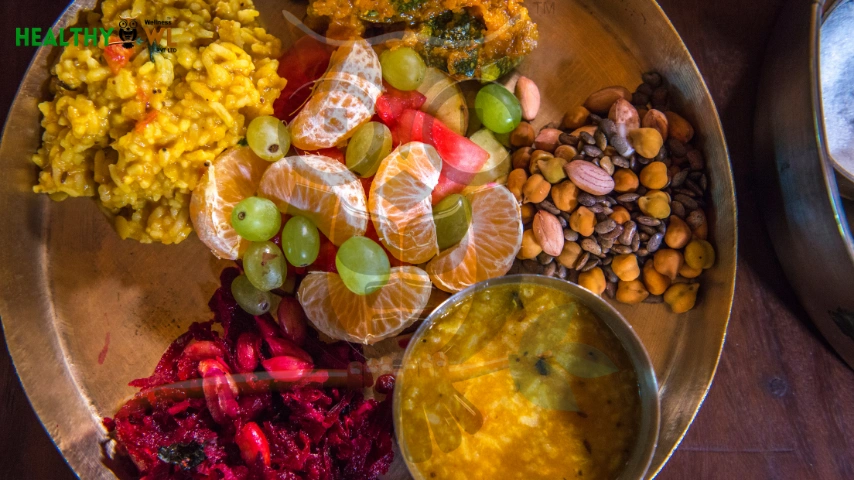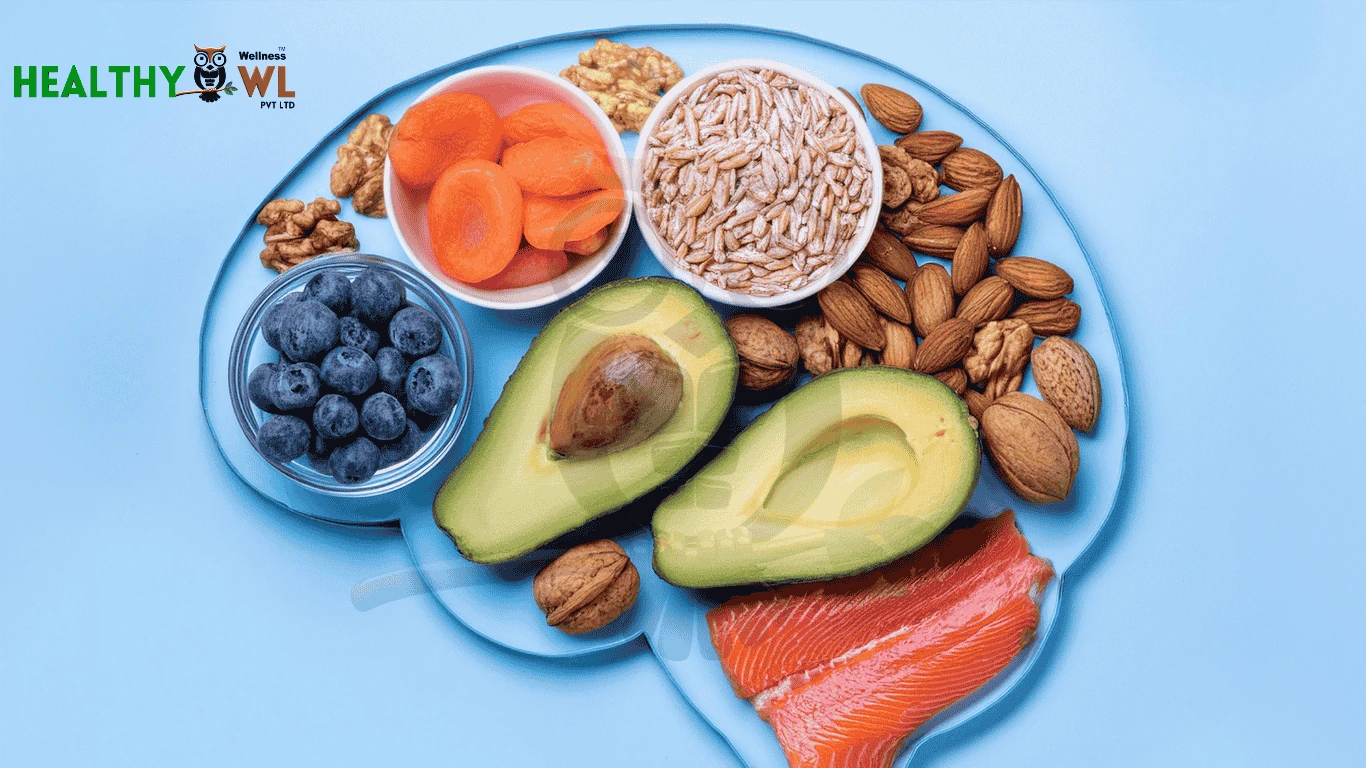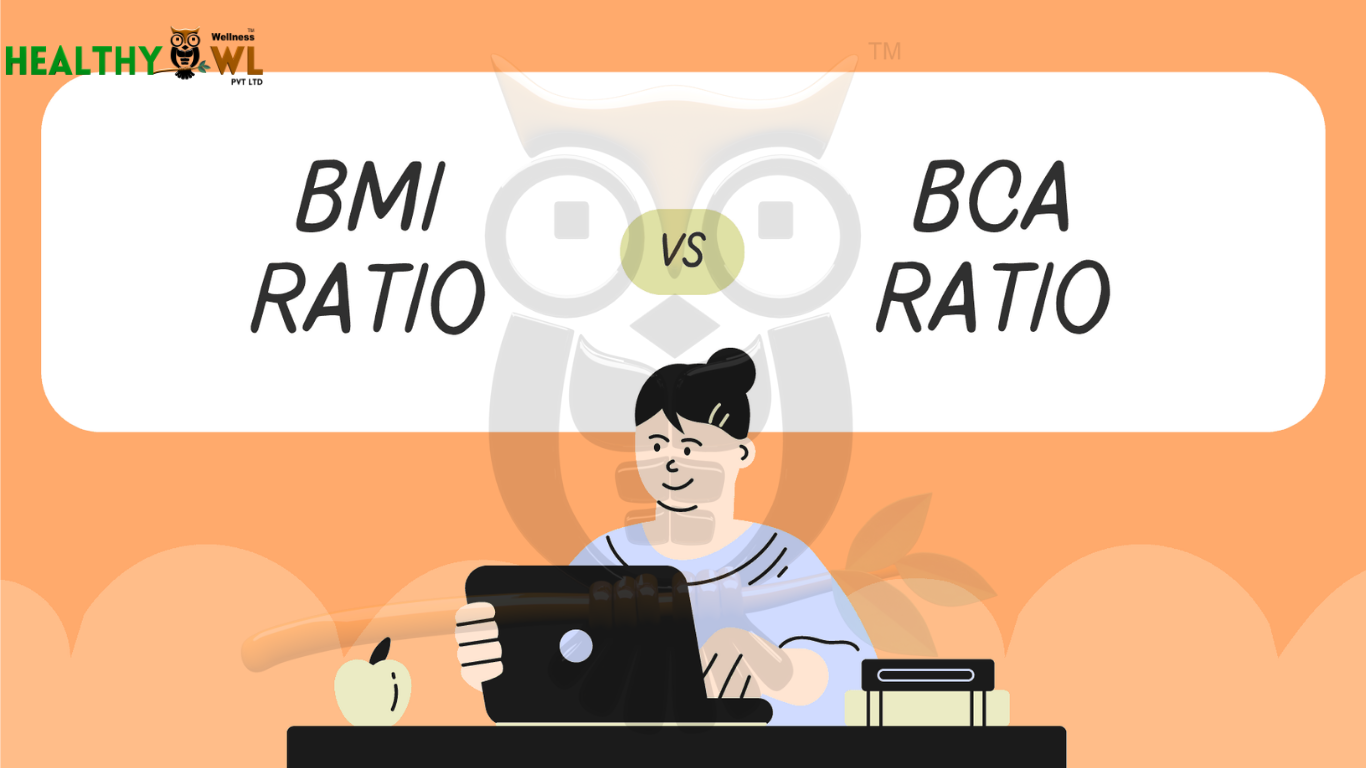Durga Puja is more than just a religious festival, it is an emotion that unites communities in devotion, art, music, and of course, food. For nine vibrant days, the streets come alive with lights, the rhythmic beats of the dhak (a type of drum), and the aroma of festive meals.

Blend Of Tradition And Nutrition
During Durga Puja, food is much more than just a festive indulgence—it’s a sacred reflection of tradition, community, and care. Every element on the plate, from the Bhog offered to Maa Durga to the fruits arranged on the altar and the sweets passed around among friends and neighbours, holds deep cultural meaning. These offerings are steeped in symbolism—representing gratitude, abundance, and shared joy.
But beyond the rituals and flavours lies something we often overlook: the health benefits. The traditional foods of Puja, many of which are seasonal and locally sourced, are naturally aligned with the body’s needs during the seasonal transition. Whether it’s the immunity-boosting fruits, the easily digestible khichuri, or the nourishing sweets made with milk, jaggery, and ghee—each dish is thoughtfully rooted in both wellness and worship.
Durga Puja beautifully reminds us that when tradition and nutrition come together, food not only feeds the body but also nurtures the spirit.
This blog explores the fruits and foods during the Durga Puja season and their health benefits—proving that tradition and nutrition go hand in hand.
Some Seasonal Fruits You Can Try This Durga Puja:
1. Guava (Amrud/Peyara) -Immunity and Digestion Support: Guavas are a seasonal favourite during Puja time, and for good reason. They’re packed with vitamin C-more than you’d get from most citrus fruits-which gives your immune system a solid boost. Plus, the fiber helps keep your digestion on track, especially handy when you’re enjoying all the rich festive treats. Not only that, the vitamin C present in guava also helps your skin glow, just in time for the celebrations.
2. Custard Apple (Sitaphal/Sharifa) – Sweet Autumn Refresher: The name Sitaphal, meaning “cooling fruit,” perfectly reflects its soothing properties and even help prevent festive-season breakouts. They’re also rich in magnesium and potassium, which support heart health, relax the muscles, and help manage blood pressure. The natural sugar present in it gives you a gentle energy boost, perfect for winding down after busy day of celebrations.
3. Pear (Nashpati) – Gentle Hydration and Gut Support: Pears are a soothing, hydrating choice during the festive season. With their high water content and soluble fiber, they help keep you refreshed and support smooth digestion—especially after rich or spicy foods. Their mild sweetness is easy on the stomach, and they also help naturally regulate blood sugar levels, making them a smart, feel-good fruit.
4. Sapota (Chikoo) – Gentle Energy and Digestive Support: Chikoo, with its sweet, toffee-like flavor, is a popular autumn fruit enjoyed during Durga Puja in Bengal. Though not part of traditional rituals, it’s valued for its health benefits—rich in dietary fiber, it supports digestion and helps prevent constipation. Packed with natural sugars like fructose and glucose, chikoo provides a quick energy boost, perfect for combating fatigue after late-night festivities. Its antioxidant vitamins also help strengthen immunity, keeping you healthy during the post-monsoon season.
5. Indian Gooseberry (Amla/Amloki) – Immunity and Detox Support for Seasonal Change: Amla, which comes into season right after Durga Puja, is a powerful source of vitamin C that boosts immunity and helps the body recover from monsoon-related illnesses. Known for its natural detoxifying properties, it supports liver health and helps flush out toxins-perfect for cleansing after festive indulgences. Often enjoyed as chutney or juice, amla also aids digestion and promotes healthy skin and hair, making it an ideal fruit to rejuvenate and strengthen the body as the season shifts from autumn to winter.
Other fruits to enjoy during this joyous festive season are Banana (Kola), Pomegranate (Dalim), Apple (Seb), Papaya and Grapes. These fresh, local fruits during Puja not only adds sweetness to the celebration but also helps build immunity, improve digestion, and provide energy during one of the most vibrant and whirlwind period of the year.
Why Do Seasonal Fruits Deserve a Spot on Your Plate?
- Nutrient-Rich: Seasonal fruits are at their peak, offering maximum vitamins, minerals, and antioxidants.
- Naturally Ripened: Grown and ripened without artificial chemicals, making them safer and healthier.
- Budget-Friendly & Eco-Conscious: More affordable and better for the environment by supporting local, low-impact farming.
- Supports Digestion: High in fiber and natural enzymes that aid digestion and balance heavier festive foods.
Here Are Some Quick Dishes That Perfectly Embrace The Festive Spirit Integrating The Seasonal Fruits:

- Fruit Chaat with Pomegranate & Guava: A light and refreshing immunity booster—just toss the fruits with a pinch of rock salt and a sprinkle of black pepper.
- Papaya Yogurt Bowl: Cubes of papaya mixed with curd, drizzled with jaggery, and topped with pumpkin seeds—an easy and nutritious breakfast.
- Sweet Potato Tikki: Mashed boiled sweet potatoes blended with spices and shallow-fried in ghee—a wholesome, Vrat-friendly snack.
- Lauki Soup: A gentle, soothing soup that’s perfect after indulging in rich bhog and sweets.
Some Local Bengali Delicacies To Savor:
1.Khichuri (Moong Dal + Rice): A wholesome one-pot meal, khichuri combines rice, which provides quick energy, with moong dal—a great source of protein that’s gentle on the stomach. Adding ghee not only makes it more satisfying but also supports digestion. Pairing khichuri with Dahi (yogurt) boosts gut health even more, thanks to the probiotics in yogurt that aid digestion and keep your tummy happy.
2.Payesh (Rice Pudding with Milk & Jaggery/ Dates): A beloved sweet staple in Bengali festivals, traditionally offered to Goddess Durga. Payesh is rich in calcium and protein, which provides a good energy boost. When prepared with jaggery, it also supplies iron, helping to restore haemoglobin levels and combat post-monsoon fatigue. Adding dates to payesh naturally sweetens it while boosting fiber, antioxidants, and minerals, helping digestion, providing lasting energy, and supporting heart health.
3.Misti Doi (Sweet Yogurt): A popular Bengali dessert served during Durga Puja, symbolizing warmth and hospitality. Mishti Doi is made from fermented yogurt and sweetened with jaggery or sugar, it provides probiotics for digestion and is rich in calcium and protein, offering both taste and nutrition.
4. Labra (Mixed Vegetable Curry): A classic Bengali dish featuring seasonal vegetables like pumpkin, brinjal, beans, and spinach, always served alongside khichuri as prasad. Packed with dietary fiber, vitamins, and antioxidants from the mix of veggies, it aids digestion, boosts immunity, and helps balance out the richness of festive meals.
5 Smart Eating Tips For Durga Puja:

- Balance fried foods with fruits: If you’re having fried items like Aloo Chop at pandals, pair it with a banana or guava later to ease digestion.
- Stay hydrated: Carrying a small bottle of infused water (with tulsi, lemon, or cucumber) while pandal hopping will keep your energy levels steady.
- Small portions, more variety: Don’t overload on one item, instead have small portions of different dishes, it helps avoid bloating.
- Morning immunity kick: Start your day with a seasonal fruit like apple, pomegranate, or guava before heading out.
- Don’t skip greens: Try to include a serving of green leafy or light vegetables at dinner for balance.
The Deeper Connection: Food, Spirit & Community
Durga Puja is about more than devotion—it’s about shared meals, collective joy, and seasonal balance.
- The Khichuri and Labra remind us of community meals that nourish both stomach and soul.
- The Bananas and Pomegranates symbolize fertility, strength, and prosperity.
- The Payesh and Mishti Doi sweeten not just the palate but also relationships.
When tradition meets nutrition, the festival becomes more than celebration—it becomes healing.
Final Thoughts
Durga Puja teaches us that festive food doesn’t have to be unhealthy. By embracing seasonal fruits, Bengali delicacies, and mindful eating habits, you can enjoy every moment without compromising your well-being.
This year, let’s not just celebrate Maa Durga’s victory over evil but also celebrate a healthier, more mindful lifestyle. Because when food nourishes both body and spirit, the festival becomes truly divine.
Looking For personalized Festive Diet Plans Or Tips?
Join us at Healthy Owl Wellness for nutrition guidance tailored to your lifestyle.
Interested In Exploring More About Healthy Eating?
Join us at Healthy Owl Wellness for personalized meal plans and wellness tips that suit your lifestyle. Contact us today!
Sources:
Breakaway.in – Traditional Bengali Cuisine
Mamanoursih – Sweets During festival











